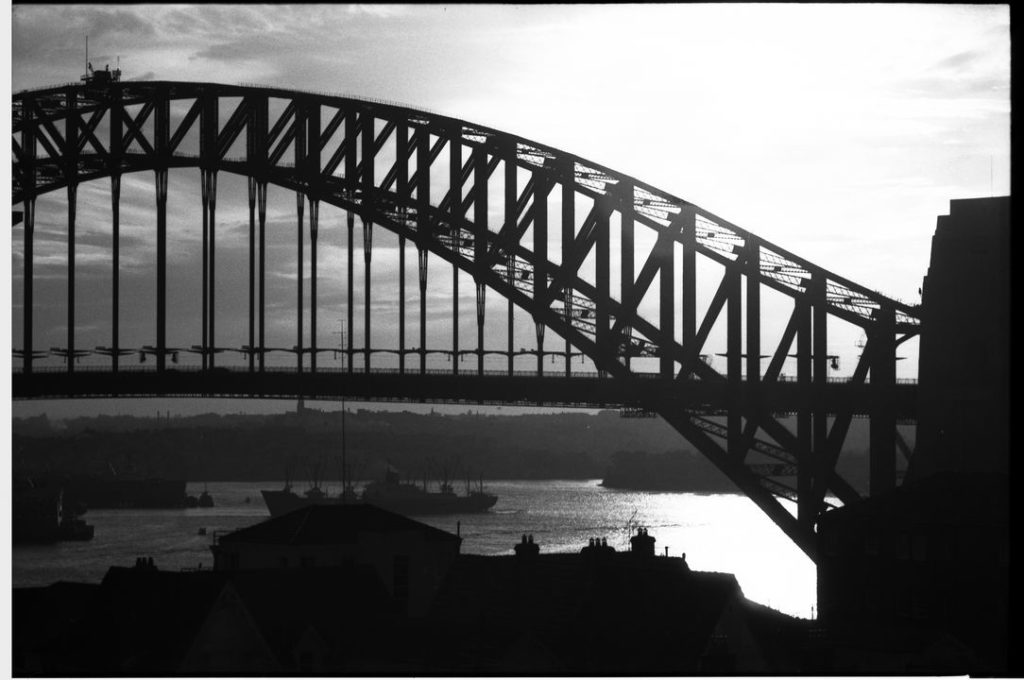
At 87 years old the Sydney Harbour Bridge continues to be admired by artists. During its construction it was documented by photographers such as Harold Cazneaux and painters like Grace Cossington Smith. Now the Bridge has been interpreted by decorative and visual artists.
The Bridge officially opened on the 19th March 1932 after eight years of construction, built after a century of debate about the need for a harbour crossing to create a better transport route into and through a growing city. The largest structure in Sydney when completed, it stands 134 metres above the harbour and is 1149 metres wide. Although its architecture is not unique the Bridge has won a place in Sydney’s heart. Chief Engineer, John Job Crew (JJC) Bradfield incorporated four granite pylons to make its shape distinctive from the similar designs of Newcastle and New York’s Hells Gate Bridges.
This badge was presented to Alfred Culver, a rigger on the Bridge’s construction team, for his participation in the opening pageant. It is a significant reminder of the importance the Bridge in so many lives.
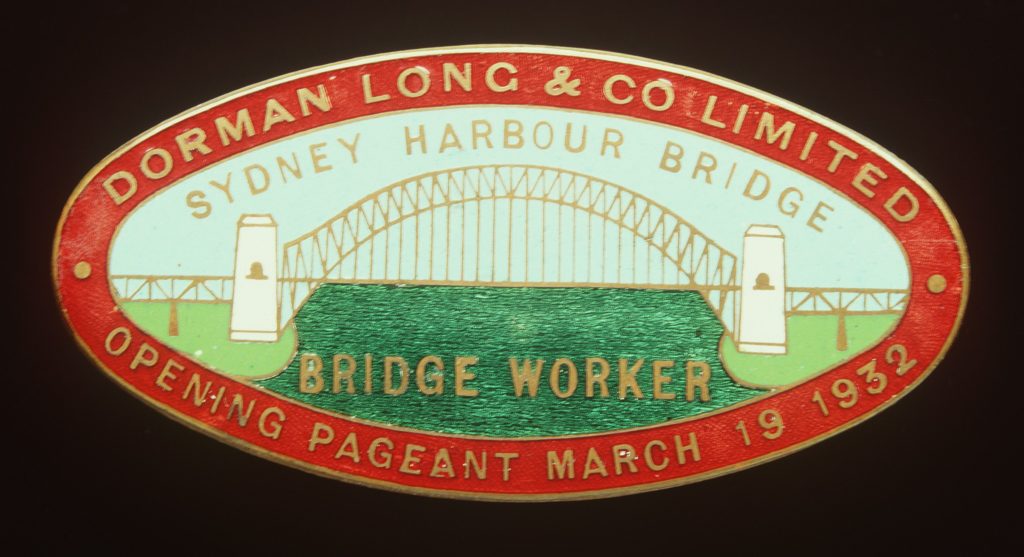
The Sydney Opera House arrived in the 1970s to compliment the Bridge on the Harbour’s southern edge. The Bridge now has become a crucial part of the visual identity and the collective culture of a city, state and a nation. Its lines, textures, shape and location are a focus for Australian artists and designers and for significant cultural and tourism events like the 2000 Sydney Olympic Games.
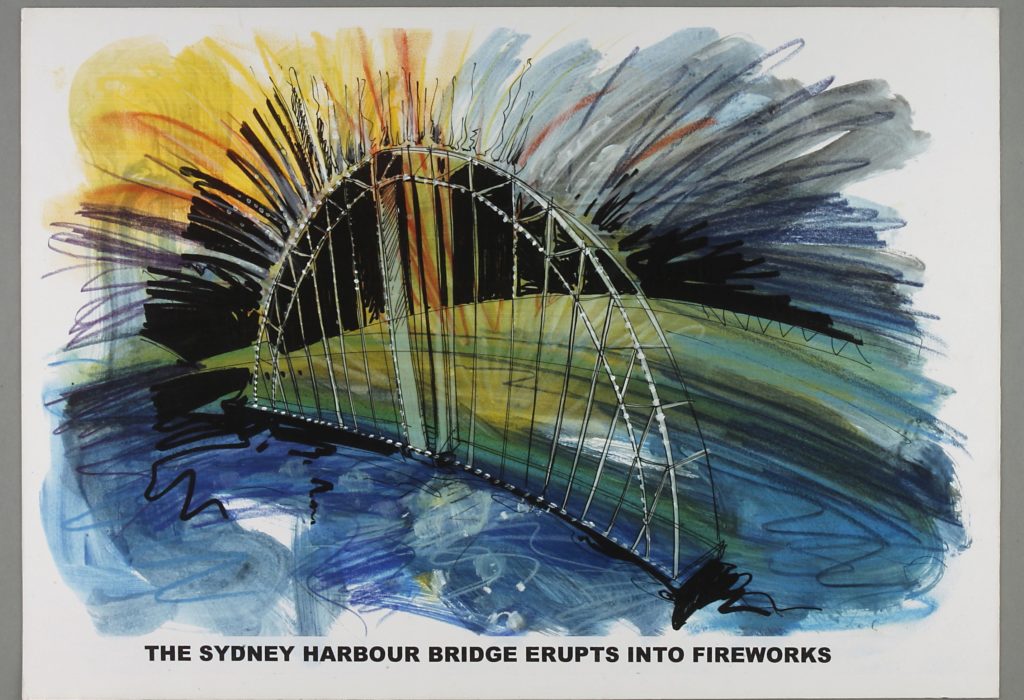
Since its opening the Bridge has appeared extensively in commercial memorabilia such as tea towels, badges, doilies and postcards. This small embroidered sandwich doily is part of a collection of 19th and 20th century Australian embroidery and needlework given to the Museum by Ian Rumsey, and forms part of the Ian Rumsey Collection. He was drawn to embroidery and needlework for its extensive use of Australian flora, fauna and other motifs specifically referencing the nation. He collected only well-preserved examples.
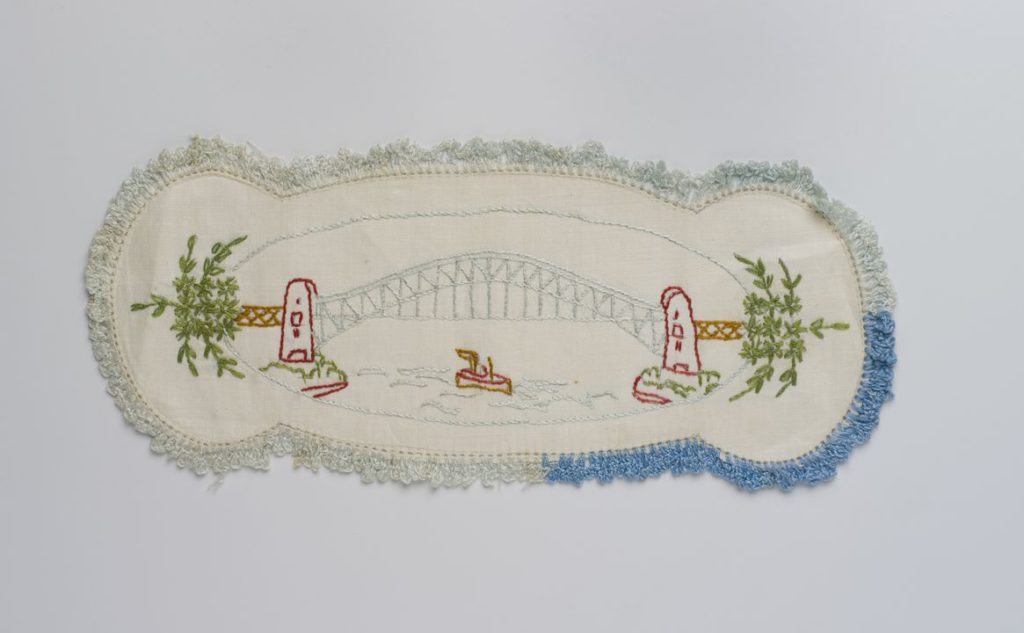
Impermanent, small and delicate materials like lace, wool and ceramics are used by makers to reinterpret this constant massive steel and granite structure.
Sandra Taylor (b. 1942) trained at East Sydney Technical College in 1965-66, and in the early 1970s moved away from making functional wares in the Anglo-Oriental style, towards painted and modelled narratives of Australian life. These are usually humorously and critically observant of an aspect of Australian ‘norms’. Here she uses cockatoos, palm trees and the Bridge to observe and evoke an aspect of Australian life.
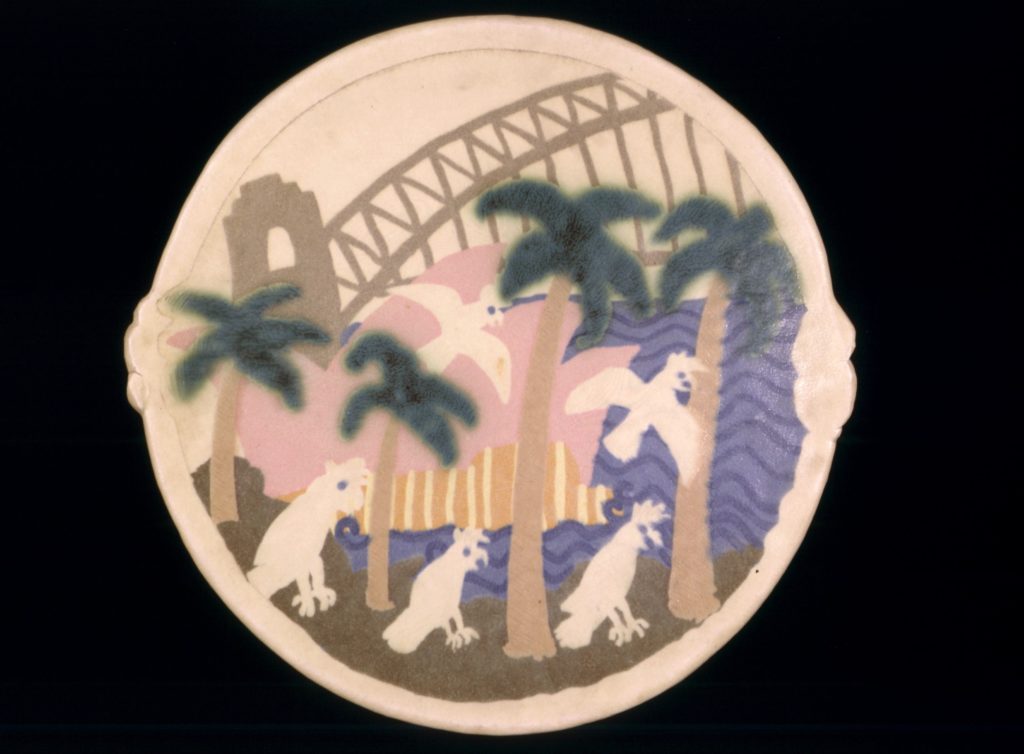
Fashion designers were also inspired by the Bridge. This coat is part of Women’s ensemble consisting of a woollen dress and coat and titled ‘Opera House’. The ensemble was designed by Jenny Kee and made by Jan Ayres for Flamingo Park. The tunic dress is a knitted with short sleeves and a V-neck and features a design of the Sydney Opera House and Harbour Bridge in blue, black and white. The cardigan coat is knitted with short sleeves and a round neck. It has a buttoned opening down the centre front and also features a design of the Sydney Harbour Bridge and Sydney Opera House.
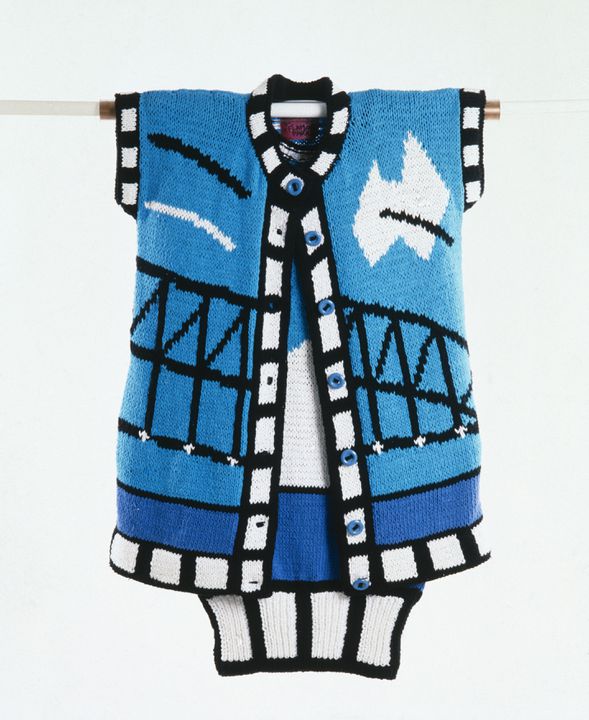
Bridges are increasingly conceptualized as brands – Sydney artist and graphic designer Ken Done has used the Harbour and Bridge in imagery to decorate postcards and clothing. “Ken Done (b. Sydney 1940), is the artist/designer behind the painting on this men’s waistcoat. He has a unique place in the history and development of Australian design and popular culture. He developed a uniquely fresh, child-like but painterly style to capture iconic Sydney and Australian flora, fauna and sites such as the Bridge and Great Barrier Reef. His style appealed enormously to a late 20th century tourist market and retail outlets. The majority of his products were popular shopping destinations for international tourists from the late 1980s onwards.”*
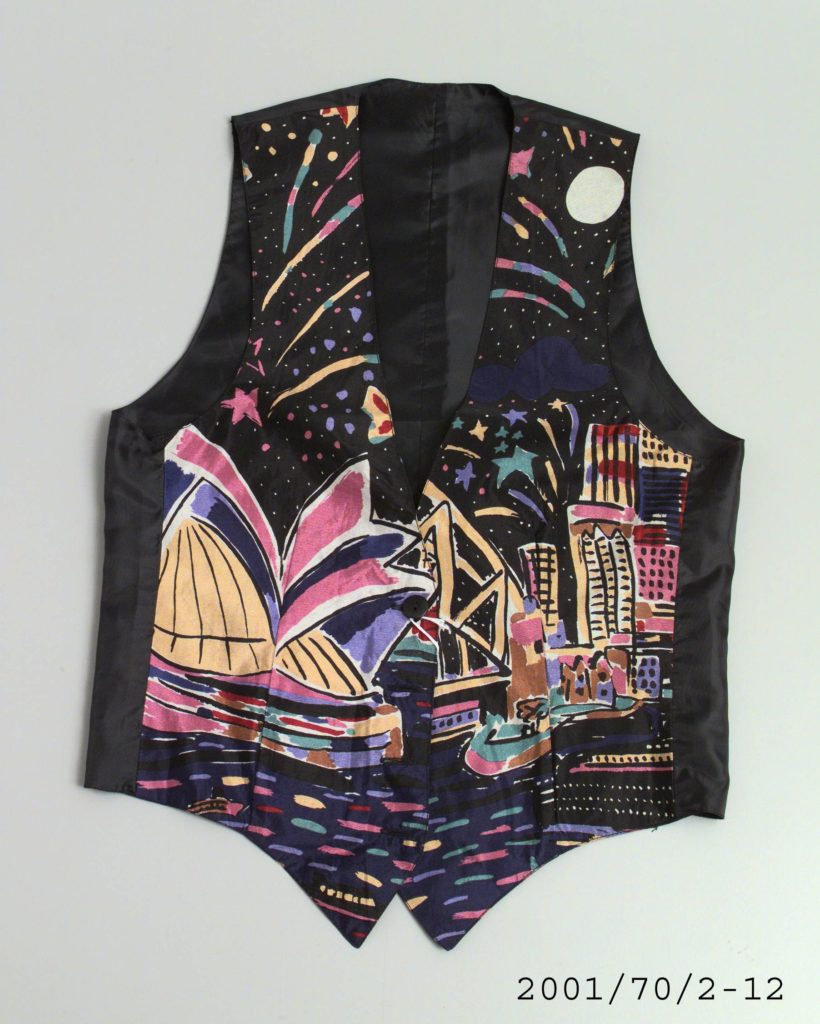
The Bridge has long been the backdrop for product advertising campaigns and in movies. Leading Sydney- based fashion, documentary and commercial photographer, David Mist (b. London 1937) used the Bridge in his fashion shoots. The Telecom advertising campaign used this image for the cover of their Telecom White Pages in 1993 featuring Studibaker fashion. The Bridge has become a gateway to Sydney and a tourist attraction in its own right.
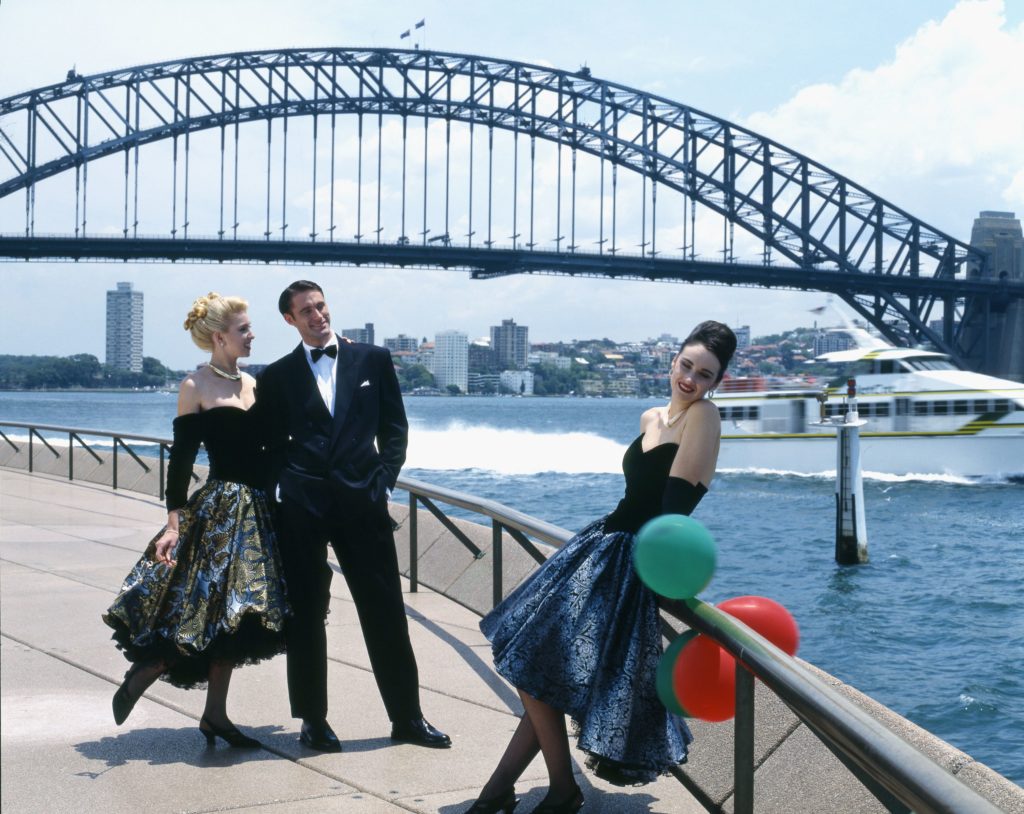
Anni Turnbull, March 2019
Further reading:
*Men’s Waistcoat, designed by Ken Done
The Bridge: the arch that cut the sky web and podcast series

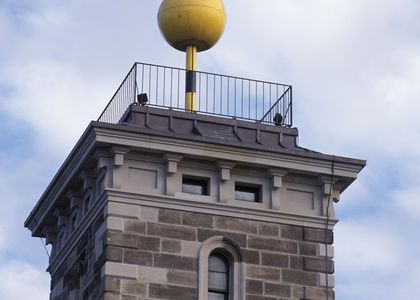
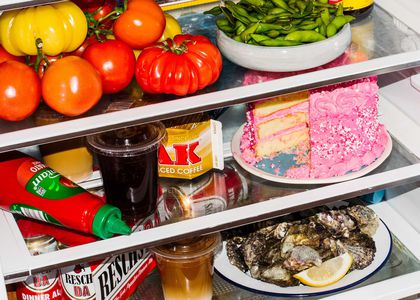
Hi. May I suggest you have a look at MAAS Object No 98/43/1 the Alexander Berry Coach possibly involved in the bridge opening ceremony and possibly crossed the bridge on the day.
Hello Richard
Many thanks for your comment. It certainly would be interesting to confirm. Why do you think this particular object could have ben used in the Sydney Harbour Bridge opening ceremony?
Anni